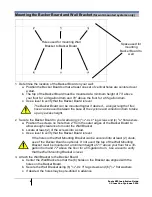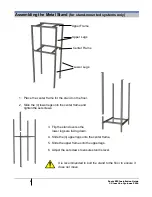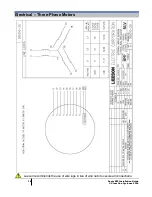
1 Pentz EF5 Installation Guide
© Clear Vue Cyclones 2018
Disclaimers & Warnings
WARNING: All persons, by purchasing a motorized dust collection system, motor, or
individual parts from CLEAR VUE CYCLONES, or using these instructions which are
provided as suggestions only, agree to the following disclaimer:
Installing and/or operating this motorized dust collection system, or use of individual
parts, involves the risk of serious bodily injury or even death. The buyer and user
accept total responsibility for any and all operation or use that may lead to personal
injury, economic loss, social distress, other losses, costs and damages. Seller is not
responsible for injuries and or damages of any kind resulting from operating this
motorized dust collection system, motor, or use of individual parts or instructions.
All Rights Reserved, October 2018
Duplication of any part of this manual without expressed written permission from
Bushey Enterprises, Inc. is prohibited.
IMPORTANT!
Minimum Recommended Ceiling Height
A minimum floor-to-ceiling height of 113 inches is required for systems with a 30-gallon
drum. Systems with a 55-gallon drum require a minimum floor-to-ceiling height of 119
inches. The content of this manual is based upon the assembly of the system with the
necessary ceiling height.
Leaks
To maximize performance of your dust collection system, it will be imperative to check for
leaks. Leaks on the suction side of the system will reduce the CFM (cubic feet per minute)
performance levels. We recommend the sealing of all connections in your ducting.
Leaks in the collection drum or at the bottom of the cyclone are a major problem. Such leaks
will cause an up-flow of air through the cyclone and prevent the dust from entering the
collection drum. This will affect the separation efficiency of the cyclone and more dust will
advance through to your filters, which may cause blockage.
Leaks found anywhere after the dust reaches the blower may be blown back into your shop.
This is a hazardous situation and these leaks should be sealed immediately.
Testing for leaks can be done by performing a “smoke test”. With any smoke-producing
device (such as an incense stick), waft the smoke around the various seams of the system.
Leaks in the ducting will cause the smoke to disperse. Leaks around the base of the cyclone
will cause the smoke to be pulled in. Seal any leaks for optimal performance.





















